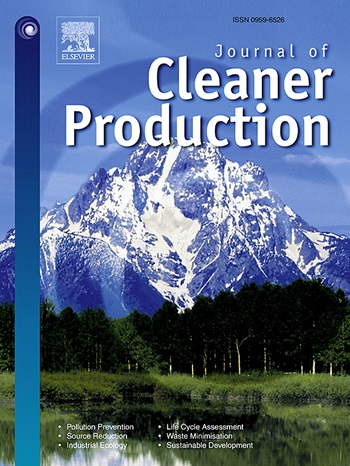Digitalization in the circular economy: Synergistic impact of big data analytics, green internet of things, and ambidextrous green innovation
IF 9.7
1区 环境科学与生态学
Q1 ENGINEERING, ENVIRONMENTAL
引用次数: 0
Abstract
Net-zero goals have prompted the manufacturing sector to rethink strategies for the circular economy and Industry 4.0 (I4.0). Big data analytics (BDA) capabilities and the green internet of things (GIoT) are influential in enhancing green innovations and net-zero performance. Additionally, data-driven lean and green practices have gained significant attention and adoption in real-world operations. Consequently, scholars in the field of operations management have directed their focus towards examining the pivotal role played by advanced information technologies, particularly BDA and GIoT. This study adopts the dynamic capabilities view paradigm to construct the conceptual model and to explore the relationships therein. Samples are sourced from small and medium-sized enterprises (SMEs) within the high-tech manufacturing sector, employing a three-wave time-lagged design. Hypothesis testing is conducted using PROCESS macro, and conclusions are subsequently derived. The study results demonstrate that BDA capabilities and GIoT significantly impact both exploratory and exploitative ambidextrous green innovation. Moreover, data driven lean and green practices (DLGPs) amplify the effect of ambidextrous green innovation on net-zero based green performance (NZGP), underscoring the critical role of merging digital and sustainable practices in enhancing environmental and operational outcomes in the manufacturing sector.


循环经济中的数字化:大数据分析、绿色物联网和双灵巧绿色创新的协同影响
净零目标促使制造业重新思考循环经济和工业4.0 (I4.0)的战略。大数据分析(BDA)能力和绿色物联网(GIoT)在加强绿色创新和净零绩效方面具有重要影响。此外,数据驱动的精益和绿色实践在实际操作中得到了极大的关注和采用。因此,运营管理领域的学者们将重点转向研究先进信息技术,特别是BDA和GIoT所起的关键作用。本研究采用动态能力观范式构建概念模型,并探讨其中的关系。样本来自高科技制造业的中小企业(SMEs),采用三波时滞设计。使用PROCESS宏进行假设检验,并随后得出结论。研究结果表明,BDA能力和GIoT对探索性和开发性双灵巧型绿色创新均有显著影响。此外,数据驱动的精益和绿色实践(DLGPs)放大了灵巧绿色创新对净零绿色绩效(NZGP)的影响,强调了融合数字化和可持续实践在提高制造业环境和运营成果方面的关键作用。
本文章由计算机程序翻译,如有差异,请以英文原文为准。
求助全文
约1分钟内获得全文
求助全文
来源期刊

Journal of Cleaner Production
环境科学-工程:环境
CiteScore
20.40
自引率
9.00%
发文量
4720
审稿时长
111 days
期刊介绍:
The Journal of Cleaner Production is an international, transdisciplinary journal that addresses and discusses theoretical and practical Cleaner Production, Environmental, and Sustainability issues. It aims to help societies become more sustainable by focusing on the concept of 'Cleaner Production', which aims at preventing waste production and increasing efficiencies in energy, water, resources, and human capital use. The journal serves as a platform for corporations, governments, education institutions, regions, and societies to engage in discussions and research related to Cleaner Production, environmental, and sustainability practices.
 求助内容:
求助内容: 应助结果提醒方式:
应助结果提醒方式:


